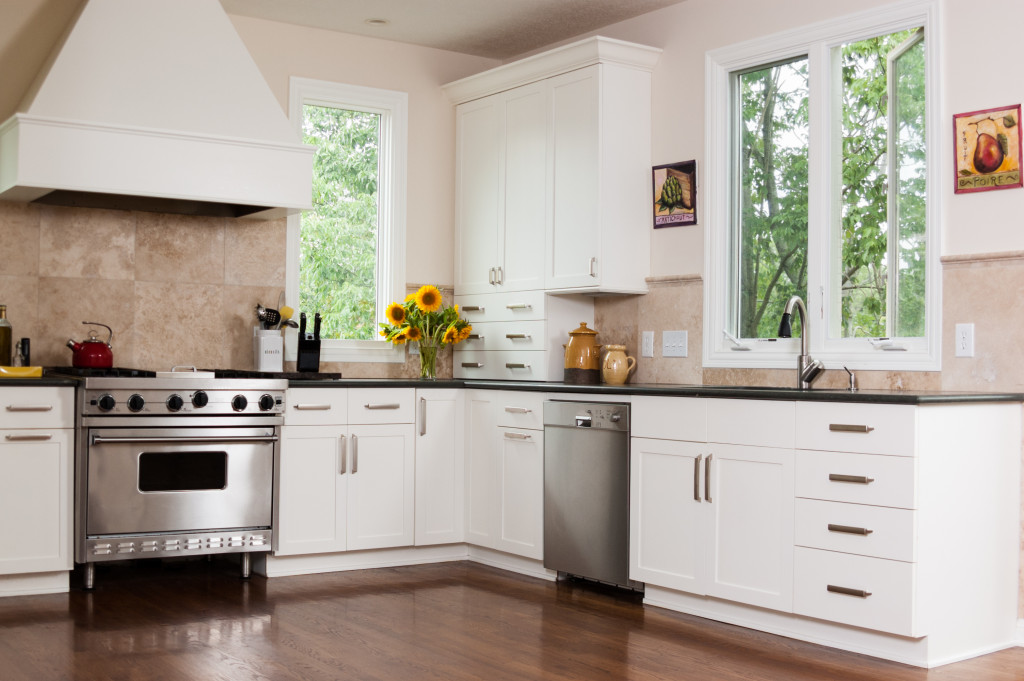When building a home, people always think about the features and the design or aesthetic they want it to have. They often concern themselves with how they want their homes to look, what furniture looks good in each space, or the appliances they want to have. And while these are all routine matters of concern for anyone, they often forget to consider the most important thing when building a home: health.
Building a healthy home is crucial for maintaining the well-being of yourself and your family and anyone who will be in your house. And there are a variety of things you can do to make sure your home is as healthy as possible.
Below are some tips on how to make a healthy home:
Ventilation and Air Quality

While it does not need any mentioning, we cannot stress enough how important it is for your home to have good ventilation for better air quality. Proper ventilation will help you eliminate any pollutants, harmful toxins, and gases that might get stuck inside your home. It also helps circulate the air in your home, ensuring that it gets a fresh supply of air throughout the day.
You can also improve the air in your home by the types of materials you use for your flooring, walls, and ceilings. Choosing hardwood floorings for your floors is excellent for a healthy home because they don’t have grout lines or fibers where allergens, dust, or mold can hold on to and become triggers for people with allergies.
If you want to take it a step further, you can also install an air ventilation system that will help circulate the air in your home and remove any pollutants or toxins that might be present.
Humidity Control
Another aspect of having a healthy home is controlling the humidity levels in your house. Maintaining proper humidity levels is vital for preventing the growth of mold, which can trigger allergies and other respiratory problems.
There are a few ways you can control the humidity in your home. One way is to use a dehumidifier to help remove any excess moisture in the air. Conversely, you can use a humidifier to add moisture to the air if the humidity levels are too low. Extremes of both are detrimental to your health, so it is essential to strike a proper balance.
Another way to control the humidity in your house is by ensuring proper ventilation, as mentioned earlier. Ventilation will help circulate the air and prevent moisture build-up in your home.
Check Carbon Monoxide and Radon Levels
Carbon monoxide and radon are invisible, odorless, and tasteless gases that could be present in your home without you knowing it. And unfortunately, both of these gases can be extremely harmful to your health if inhaled for too long or in copious amounts.
That’s why it’s essential to have a carbon monoxide detector and a radon detector installed in your home. These devices will help alert you if there are high levels of either gas present so that you can take the necessary steps to remove them from your home.
Maintain a Clean Home
One of the most important things you can do for a healthy home is to keep it clean. Dust, mold, mildew, and other allergens can trigger respiratory problems, so keeping your home free of these triggers is essential.
You can do this by dusting regularly, vacuuming often, and cleaning your floors and surfaces. You should also make sure to keep any areas prone to moisture (such as kitchens and bathrooms) as dry as possible to prevent the growth of mold and mildew.
Water Quality
The water quality in your home is also an essential aspect of having a healthy home. Drinking contaminated water can lead to various health problems, such as gastrointestinal illnesses, skin infections, and reproductive issues.
There are a few things you can do to ensure that the water in your home is safe to drink. Installing a water filtration system can help remove any impurities from the water, such as metals and calcium deposits. Another way is to have your water regularly tested to check for contaminants.
Lighting
You might not think it, but the lighting in your home also plays a role in your health. Exposure to artificial light can cause eye strain, headaches, and migraines. It can also disrupt your sleep cycle and contribute to fatigue.
You can reduce the risk of these health problems by utilizing natural lighting in your home as much as possible. That could mean opening up the curtains or blinds to let in natural light during the day. You can also invest in energy-efficient light bulbs that emit less artificial light.
Building a healthy home is essential for the well-being of yourself and your family. These steps will help create a healthier environment for you and your family and prevent and reduce the likelihood of illnesses, diseases, or allergies developing in your home.

